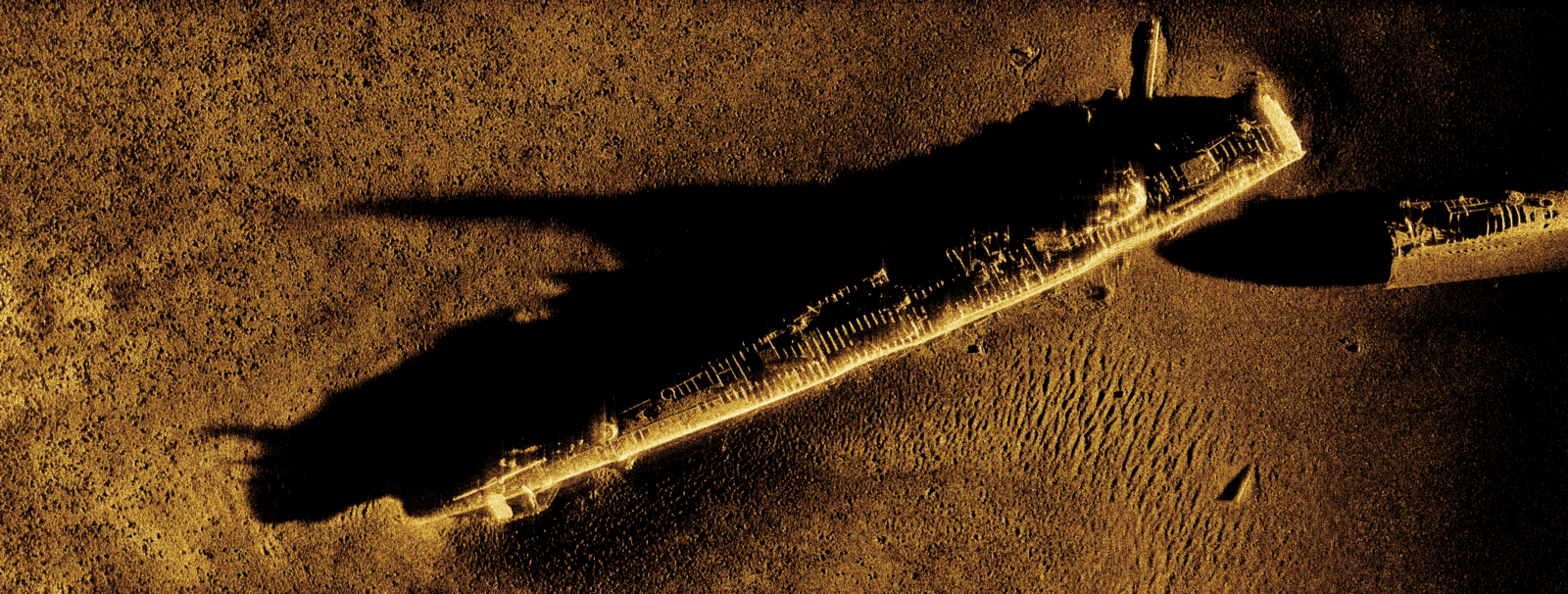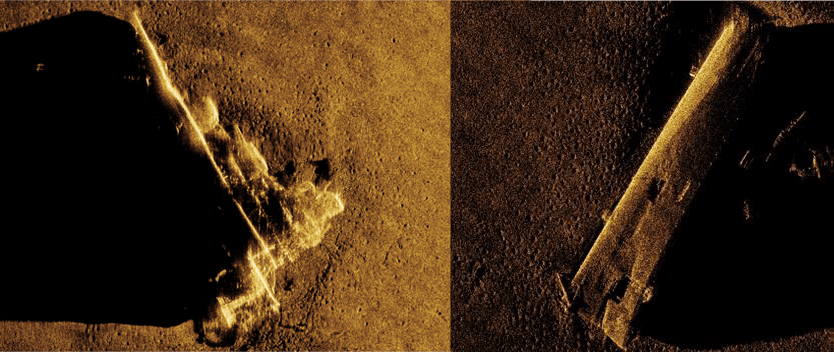ThayerMahan Completes Seabed Survey Operations Aboard NOAA Ship

NOAA Ship Okeanos Explorer completed leg one of Expedition 1904 in partnership with private industry and the Office of Ocean Exploration and Research (OER).
The mission consisted of seabed surveys of Undersea Cultural Heritage (UCH) sites located along the East Coast of the United States. Engineers from ThayerMahan's Seabed Systems Group, along with representatives from their technology partner Kraken Robotics, demonstrated the efficacy of their SeaScout Synthetic Aperture Sonar (SAS) system in gathering high-resolution (3 cm x 3 cm), high-speed (6 - 8 knots), wide-area (up to 3 km2 / hour) precision seabed imagery.
The SeaScout system, with the KATFISH-180 actively stabilized towbody and synthetic aperture sonar payload, produced imagery and bathymetric data which was streamed to ThayerMahan's shore-based operations center located in Groton, CT enabling real-time viewing and analysis of survey returns. Additionally, the SeaScout system was remotely operated from ThayerMahan's Groton HQ.
 USS Bass – Decommissioned in 1937, Bass served in Submarine Division 20 in the Atlantic, Caribbean, and Pacific. Out of necessity, the submarine was recommissioned during WWII until it was finally used as a test target for the Mk 24 acoustic homing torpedo on March 12, 1945.
USS Bass – Decommissioned in 1937, Bass served in Submarine Division 20 in the Atlantic, Caribbean, and Pacific. Out of necessity, the submarine was recommissioned during WWII until it was finally used as a test target for the Mk 24 acoustic homing torpedo on March 12, 1945.
ThayerMahan President and CEO Mike Connor stated:
"ThayerMahan was thrilled at the opportunity to go to sea aboard NOAA Ship Okeanos Explorer. Our SeaScout system performed well and provided high definition imagery of archeological sites. We were very impressed by the Okeanos Explorer's crew and their ability to integrate new technology. We think we can help NOAA and others conduct precise exploration at a speed that will have a big impact on the future of ocean science."
 USS Murphy -Departing from New York Harbor 21 October 1943, the destroyer collided with the SS Bulkoil while traveling in a convoy. The accident sheared off the front third of the ship, resulting in extensive damage and the loss of 36 sailors. Remarkably, the ship was saved, towed back to New York and repaired in 7 months – eventually returning to operations and serving during the invasion of Normandy.
USS Murphy -Departing from New York Harbor 21 October 1943, the destroyer collided with the SS Bulkoil while traveling in a convoy. The accident sheared off the front third of the ship, resulting in extensive damage and the loss of 36 sailors. Remarkably, the ship was saved, towed back to New York and repaired in 7 months – eventually returning to operations and serving during the invasion of Normandy.

